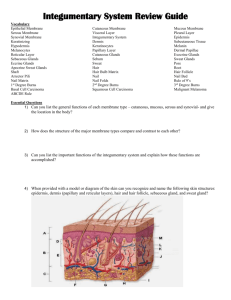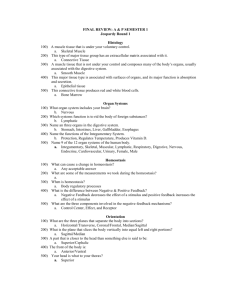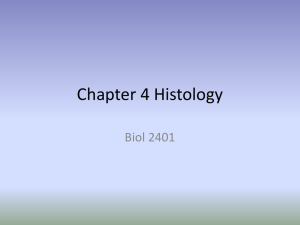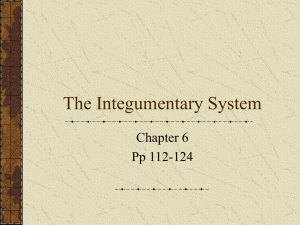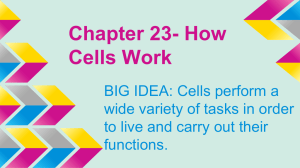Practice Lecture Test 1
advertisement
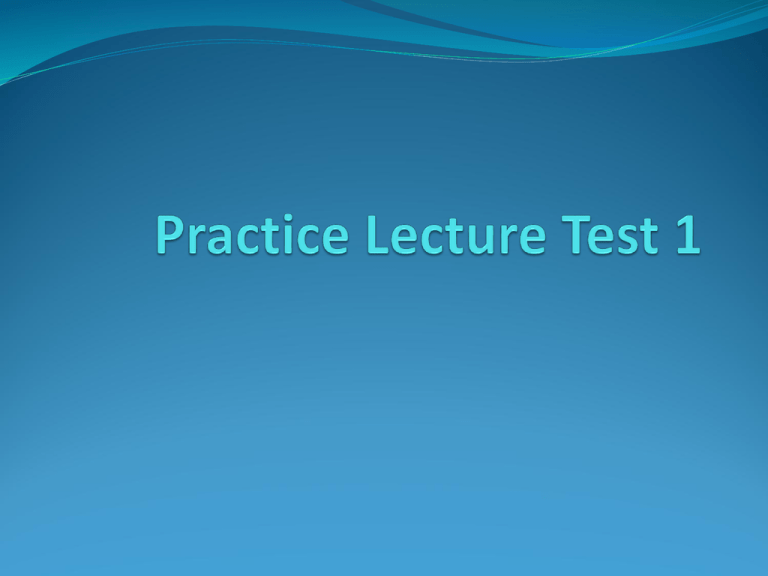
1. The adjustments that maintain a stable and balanced environment within the body are known as A) Pathology B) Metabolism C) Syndrome D) Homeostasis 2. The body uses feedback loops to maintain homeostasis. The response that opposes an action is known as a/an A) Affirmative feedback loop B) Negative feedback loop C) Depressing feedback loop D) Positive feedback loop 3. A body in the prone position is facing ________. A) Left B) Upward C) Right D) Downward 4. Dorsal cavities contain which organs? A) Stomach B) Pancreas C) Brain and spinal cord D) Diaphragm 5. The belly button is located in which region? A) Umbilical B) Epigastric C) Hypogastric D) Iliac 6. Pain in this ________ quadrant can be a sign of appendicitis. A) LLQ B) LUQ C) RUQ D) RLQ 7. The increasingly forceful labor contractions that lead to childbirth are an example of this type of mechanism: A) positive feedback. B) effector shutdown. C) receptor activation. D) negative feedback. 8. Anterior is to ________ as posterior is to dorsal. A) cranial B) medial C) ventral D) inferior 9. The diaphragm separates the ________ cavity from the ________ cavity. A) thoracic; abdominopelvic B) pericardial sac; pericardial C) abdominal; pelvic D) pleural; mediastinum 10. The membrane covering the surface of the lung is referred to as the A) serous membrane. B) visceral pleura. C) parietal peritoneum. D) visceral pericardium. 11. Which of the following is arranged in correct order from the most COMPLEX to the SIMPLEST? A) tissue, cellular, molecular, organ, system, organism B) cellular, tissue, molecular, system, organ, organism C) molecular, cellular, tissue, organ, system, organism D) organism, system, organ, tissue, cellular, molecular 12. Which word means towards the side or away from the midline? A) lateral B) sagittal C) medial D) transverse 13. The patient had a mass in the inguinal area. In which part of the abdominopelvic region would this mass be found? A) directly above the stomach B) beneath the ribs C) at the navel D) in the groin 14. The plane that divides the body into top and bottom sections is the ____________ plane. A) frontal B) coronal C) midsagittal D) transverse 15. Anatomy is to ________ as physiology is to ________. A) structure; function B) growth; form C) form; structure D) function; form 16. The chin is ________ to the nose. A) superior B) Anterior C) inferior D) medial 35. Of the following choices, the pH of the least acidic solution is A) 6.0. B) 4.5. C) 2.3. D) 1.0. 36. AB → A + B is to decomposition as A + B → AB is to A) exchange. B) synthesis. C) combustion. D) replacement. 37. The most abundant high-energy compound in cells is A) DNA. B) AMP C) ATP D) RNA 38. An alternate term for tumor is A) neoplasm. B) cytoplasm. C) benign malignancy. D) primary metastasis. 39. The stage in a cell's life cycle in which the cell performs its normal functions and prepares for division is called A) prophase. B) metaphase. C) interphase. D) telophase. 40. If the concentration of sodium chloride in the interstitial fluid surrounding cells decreases and the concentration of other solutes remains constant, A) the cells will shrink. B) the cells will swell. C) the fluid outside of the cells will become isotonic. D) the fluid outside of the cells will become hypertonic. 41. The process by which molecules such as glucose are moved into cells along their concentration gradient with the help of membrane-bound carrier proteins is called A) osmosis. B) facilitated diffusion. C) active transport. D) endocytosis. 42. Most of a cell's DNA is located in its A) ribosomes. B) lysosomes. C) Golgi apparatus. D) nucleus. 43. When activated, lysosomes function in A) formation of new cell membranes. B) synthesis of proteins. C) digestion of foreign material. D) synthesis of lipids. . 44. Synthesis of lipids and glycogen takes place at the A) ribosomes. B) rough ER. C) smooth ER. D) Golgi apparatus. 45. During mitosis, two daughter cells form, each of which has A) a different number of chromosomes than the original cell. B) twice as many chromosomes as the original cell. C) the same number of chromosomes as the original cell. D) a lesser number of chromosomes than the original cell. The best definition of organic material is anything that A) contains hydrogen covalently bonded. B) contains carbon, oxygen, and hydrogen covalently bonded. C) contains carbon. D) contains carbon and hydrogen covalently bonded. ________ is the process by which simpler compounds are built up and used to manufacture materials for growth, repair, and reproduction. A) Embolism B) Catabolism C) Metabolism D) Anabolism This is the movement of water from an area of lower concentration solute to an area of higher concentration through a membrane. A) Filtration B) Dialysis C) Osmosis D) Diffusion Proteins are composed of units called A) fatty acids. B) simple sugars. C) nucleotides. D) amino acids. 18. This type of muscle tissue is found in the heart. A) Voluntary B) Smooth C) Skeletal D) Cardiac 19. This type of tissue provides rapid communication between various parts of the body. A) Epithelial B) Nervous C) Muscle D) Connective 20. This type of tissue covers the body and lines many of the parts of the body. A) Epithelial B) Nervous C) Muscle D) Connective 21. When cells are arranged in a scale-like or flat arrangement, they are referred to as ________. A) Columnar B) Cuboidal C) Squamous D) Transitional 27. A lubricating membrane that works with cartilage in a joint is called a A) cutaneous membrane. B) synovial membrane. C) serous membrane. D) mucous membrane. 28. When the arrector pili muscles contract, A) the skin changes color. B) hairs are shed. C) "goose bumps" are formed. D) sweat is released from sweat glands. 29. The ________ glands in the axilla become active at the time of puberty. A) axillary B) apocrine sweat C) sebaceous D) ceruminous 30. The tough "horn" superficial layer of the epidermis is known as the A) stratum germinativum. B) stratum corneum. C) stratum spinosum. D) stratum granulosum. 31. Sebaceous glands are to oil glands as sudoriferous glands are to: A) adrenal glands. B) salivary glands. C) sweat glands. D) endocrine glands. 32. An important vitamin that is formed in the skin when it is exposed to sunlight is A) vitamin A. B) vitamin B. C) vitamin C. D) vitamin D.

